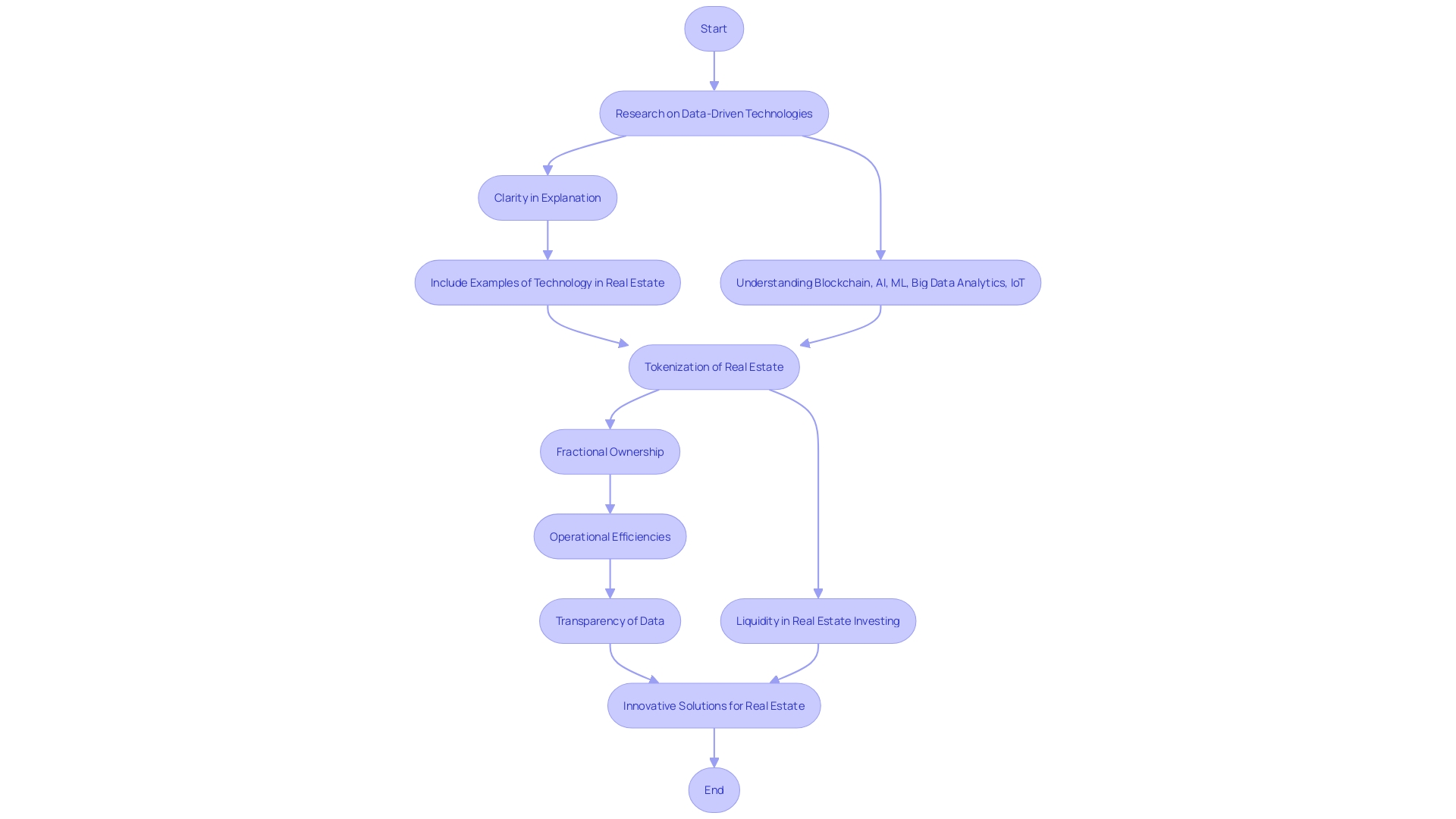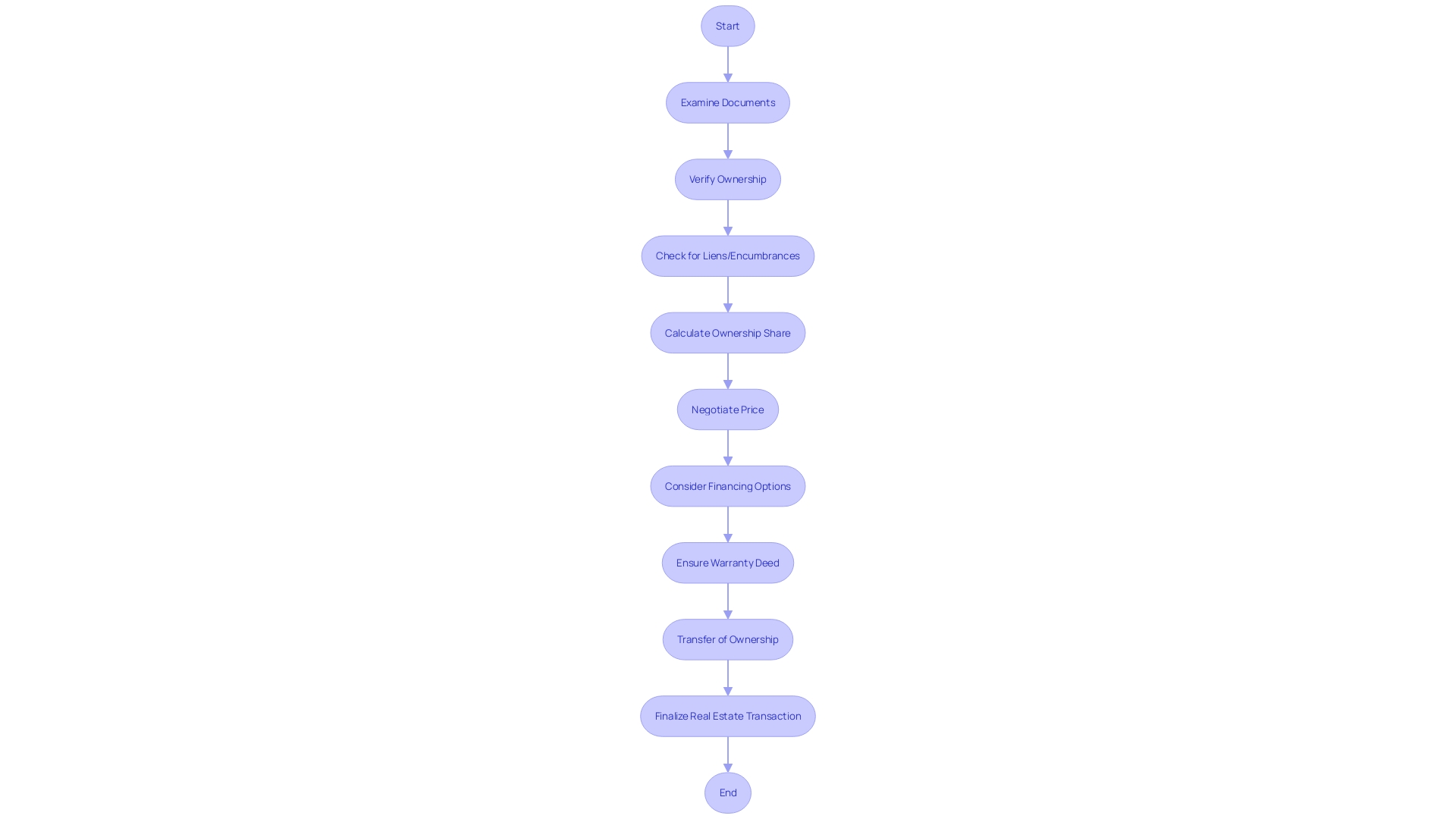Introduction
A chain of title is a crucial component of property ownership, meticulously documenting the history of ownership transitions and encumbrances. It serves as the foundation for establishing clear ownership and preventing disputes. On the other hand, an abstract of title provides a concise summary of a property's ownership lineage, highlighting key information for stakeholders.
These documents play a vital role in real estate transactions, ensuring the marketability of properties and protecting the interests of buyers and lenders. Technological advancements, such as Blockchain and AI, are enhancing transparency and efficiency in the industry. Professionals must stay informed about these developments and maintain clarity in their communication with clients.
Rigorous title examinations are necessary to prevent fraudulent activities and secure investments. Companies like First American Financial Corporation are leading the digital transformation of the industry, providing reliable title services. The distinction between a chain of title and an abstract of title is essential for navigating the complex legal considerations within the real estate industry.
Ultimately, these documents safeguard the integrity of transactions and confirm legal ownership.
What is a Chain of Title?
A series of rights is not just a historical record; it is the basis of possessing a piece of land, meticulously documenting each transfer of a land's control. This crucial sequence traces the from the initial holder to the current proprietor, encapsulating all transactions, including sales, inheritances, and encumbrances such as mortgages and liens. Comprehending the complexities of a series of ownership is vital, as demonstrated by a situation where a family's legacy disagreement over a £1 million estate resulted in an extended seven-year legal battle, underscoring the significance of unambiguous and uncontested records of ownership.
The legal importance of a deed varies from that of a real estate document, which is a tangible record indicating ownership. Having ownership implies that you are the acknowledged legal possessor, a position not legally granted unless the ownership is in your name or that of your entity. This distinction is critical for any actions involving the property, from improvements to sales. As First American Financial Corporation, a leader in , underscores, the digital transformation of the industry, backed by their financial fortitude and innovative technologies, is advancing the clarity and accessibility of information related to .
Recent legal analyses and court decisions continue to shape the insurance landscape, with organizations like ALTA advocating for the industry's interests. In the face of evolving arrangements concerning the possession of assets, such as unmarried couples co-owning properties, experts like Joshua Martin from Atticus Home Buyers advice on the necessity of legal agreements to delineate the fate of assets in the event of separation, emphasizing the of different types of joint asset possession. These developments highlight the crucial importance of clear documentation in safeguarding legal ownership and the possible pitfalls of unclear or disputed records.
What is an Abstract of Title?
An overview of the document acts as a concise summary that captures the core of a land's . This as it condenses the main elements, including the sequence of past and present owners, any existing liens or burdens, as well as a documented chronicle of transfers and legal conveyances. By providing a clear and concise summary of the , it equips with the required information to conduct due diligence on the property's ownership history, enabling them to identify any potential issues that may affect the transaction.
The importance of a strong is emphasized by the experience of , a prominent entity in the field of property and settlement solutions, whose advanced technologies and abundant data resources have played a key role in driving the industry ahead. Similarly, in the context of Akiya purchases, such as the detailed case study from the Chiba Prefecture, the abstract provides invaluable clarity to clients, ensuring they are well-informed of every facet of their investment from the outset. It is this level of transparency and detail that plays a pivotal role in maintaining the integrity of , safeguarding the interests of all parties involved.
Key Differences Between Chain of Title and Abstract of Title
Differentiating between a chain of documentation and an outline of documentation is vital for real estate experts, as each fulfills a separate function in property possession history. The is a comprehensive historical chronicle, encompassing all relevant documents and records, which meticulously describes every transfer of ownership, as well as any encumbrances that may exist. On the other hand, the abstract of document provides a streamlined summary, highlighting key pieces of information that are most relevant to stakeholders.
The comprehensive nature of the makes it an essential tool for researchers and lawyers who are responsible for conducting a thorough examination of a property's legal rights. It is also crucial when complex situations arise, such as when assets are passed down through heirs without formal planning, leading to multiple family members holding an undivided interest. In contrast, the is more commonly utilized to provide potential buyers or lenders with a concise overview of the property's lineage of possession, aiding in their decision-making process.
Recent advancements in technology, including the use of Blockchain, have introduced additional layers of transparency and security to the real property sector. Blockchain offers a tamper-proof ledger for transactions, which can greatly assist in tracking ownership and preventing fraud—a crucial improvement for luxury real property markets where high-value exchanges are frequent. Furthermore, AI technologies are enhancing operational efficiencies, as pointed out by Dr. Kate Jarvis of Fifth Dimension AI, by automating routine tasks and enabling to concentrate on more valuable work.
Given the continuous evolution of the legal landscape in real estate, it is essential for practitioners to stay updated on technological innovations and their implications for managing property titles, always striving for clarity and precision in their communications with clients. The difference between a sequence of ownership and a summary of ownership is just one element of the complex network of legal considerations within the industry, which requires continuous learning and the implementation of effective methods for the advantage of all parties involved.

Importance of Chain of Title and Abstract of Title
Comprehending the intricacies of possessing a piece of land is crucial in real estate dealings, where the succession of control and summary of possession function as the basis for establishing unambiguous possession. The sequence of ownership is a thorough record of possession, recording every transfer and guaranteeing that there are no inconsistencies or legal concerns that could endanger the marketability of the asset. Likewise, the gives a condensed history of all documented occurrences that impact the title of a real estate.
The significance of these cannot be emphasized enough, as they are vital for confirming that the asset can be legally transferred without any undisclosed liens, encumbrances, or claims. This level of scrutiny is vital for buyers and lenders who seek to secure their investments and assure that their claims to the property are valid and enforceable.
Considering recent incidents where insurance companies were involved in mortgage fraud conspiracies, the importance of thorough examinations is emphasized. For example, the situation of Drillman, who admitted to wire fraud impacting a financial institution, highlights the potential dangers linked to transactions involving ownership rights. This emphasizes the need for industry professionals to conduct thorough due diligence to protect against such fraudulent activities.
Furthermore, as the realty sector evolves, companies such as First American Financial Corporation are leading the digital transformation and providing innovative solutions. Their substantial contributions, demonstrated by a total revenue of $7.6 billion in 2022, showcase the value and importance of dependable services in facilitating secure and efficient .
A designation, separate from a real estate contract, signifies legal possession and is not denoted by a tangible record. It is a concept that confirms an individual or entity as the rightful owner of a property. Lacking the appropriate designation, one cannot assert legal possession, rendering it an essential component in any property transactions.
Practitioners within the industry must navigate various regulations, as well as understand the implications of transfer taxes and fees, which are integral to the transaction process. These frequently ignored expenses play a crucial role in financing local governments and community services, highlighting the wider effect of real property transactions on society.
The real property sector is also fiercely represented on both national and state levels, with organizations like ALTA advocating for the interests of the land industry. This representation is crucial in shaping policies and regulations that govern industry practices, ensuring that the rights and interests of all parties are protected.
In conclusion, the and abstract of title are not just procedural documents but are central to safeguarding the integrity of real estate transactions. They serve as the gateway to confirming property ownership and protecting the rights and investments of all parties involved.

Conclusion
In conclusion, the chain of title and abstract of title are essential for property ownership in real estate transactions. The chain of title meticulously documents ownership transitions and encumbrances, while the abstract of title provides a summarized overview. These documents ensure marketability, protect interests, and prevent fraud.
Technological advancements like Blockchain and AI enhance transparency and efficiency. First American Financial Corporation leads the digital transformation, providing reliable title services. ALTA advocates for the title industry.
Overall, these documents are crucial for safeguarding transactions and require professionals to stay informed about advancements.
Stay informed and safeguard your transactions with our reliable title services.
Frequently Asked Questions
What is the significance of a series of rights in land ownership?
A series of rights serves as the foundation of land possession, documenting the transfer of control from the initial holder to the current owner. It includes all transactions like sales, inheritances, and encumbrances, ensuring clarity in ownership.
How does the legal importance of a deed differ from real estate documents?
A deed signifies ownership legally, while real estate documents provide tangible records. Ownership is legally recognized only when it’s in your name or that of your entity, which is crucial for actions like property improvements or sales.
Why is it important to have clear ownership documentation?
Clear documentation prevents disputes and legal issues regarding property ownership. Unambiguous records are essential to ensure that transactions can occur without complications, as evidenced by legal battles over estates.
What role does technology play in property ownership documentation?
Advancements like Blockchain enhance transparency and security in property transactions by providing a tamper-proof ledger. Additionally, AI technologies improve operational efficiency in managing property titles.
What is the difference between a chain of ownership and an abstract of title?
The chain of ownership is a comprehensive historical record detailing all transfers and encumbrances. In contrast, the abstract of title is a concise summary focusing on key information relevant to stakeholders, aiding decision-making.
How do recent legal developments affect property ownership?
Legal analyses and court decisions continue to evolve the landscape of property ownership. For instance, co-ownership arrangements, such as those involving unmarried couples, require clear legal agreements to prevent future disputes.
Why is due diligence essential in property transactions?
Thorough due diligence protects against fraud and ensures that ownership claims are valid and enforceable. This scrutiny is vital, especially in light of incidents like mortgage fraud conspiracies.
What are the implications of transfer taxes and fees in real estate transactions?
Transfer taxes and fees are often overlooked but are essential for financing local governments and community services. Practitioners must understand these costs to navigate the transaction process effectively.
How are organizations like ALTA relevant to property ownership?
Organizations like ALTA advocate for the interests of the land industry, influencing policies and regulations that protect the rights and interests of all parties involved in real estate transactions.
Why are the chain of title and abstract of title important?
These documents are crucial for confirming property ownership and safeguarding the integrity of real estate transactions. They ensure that all parties’ rights and investments are protected.




